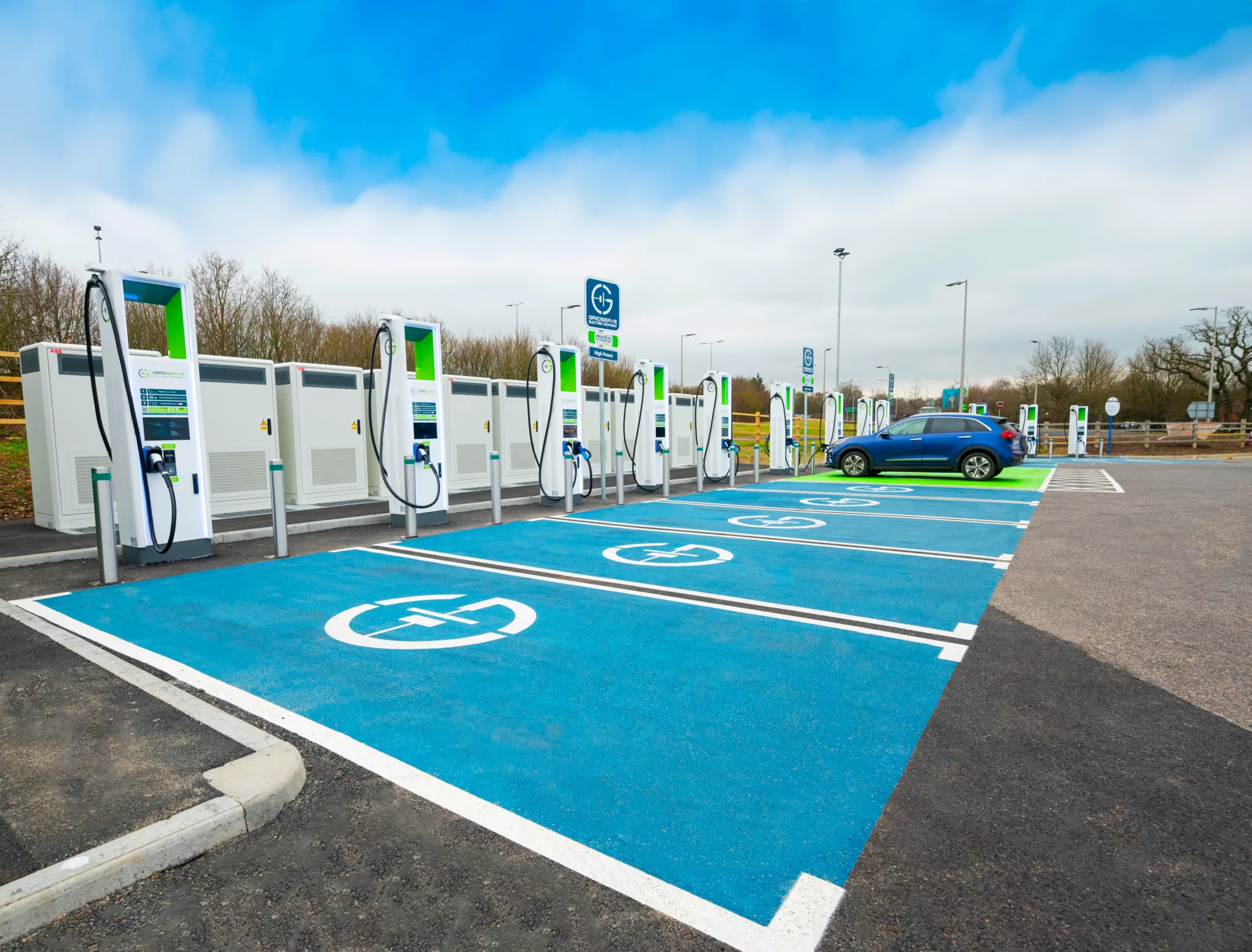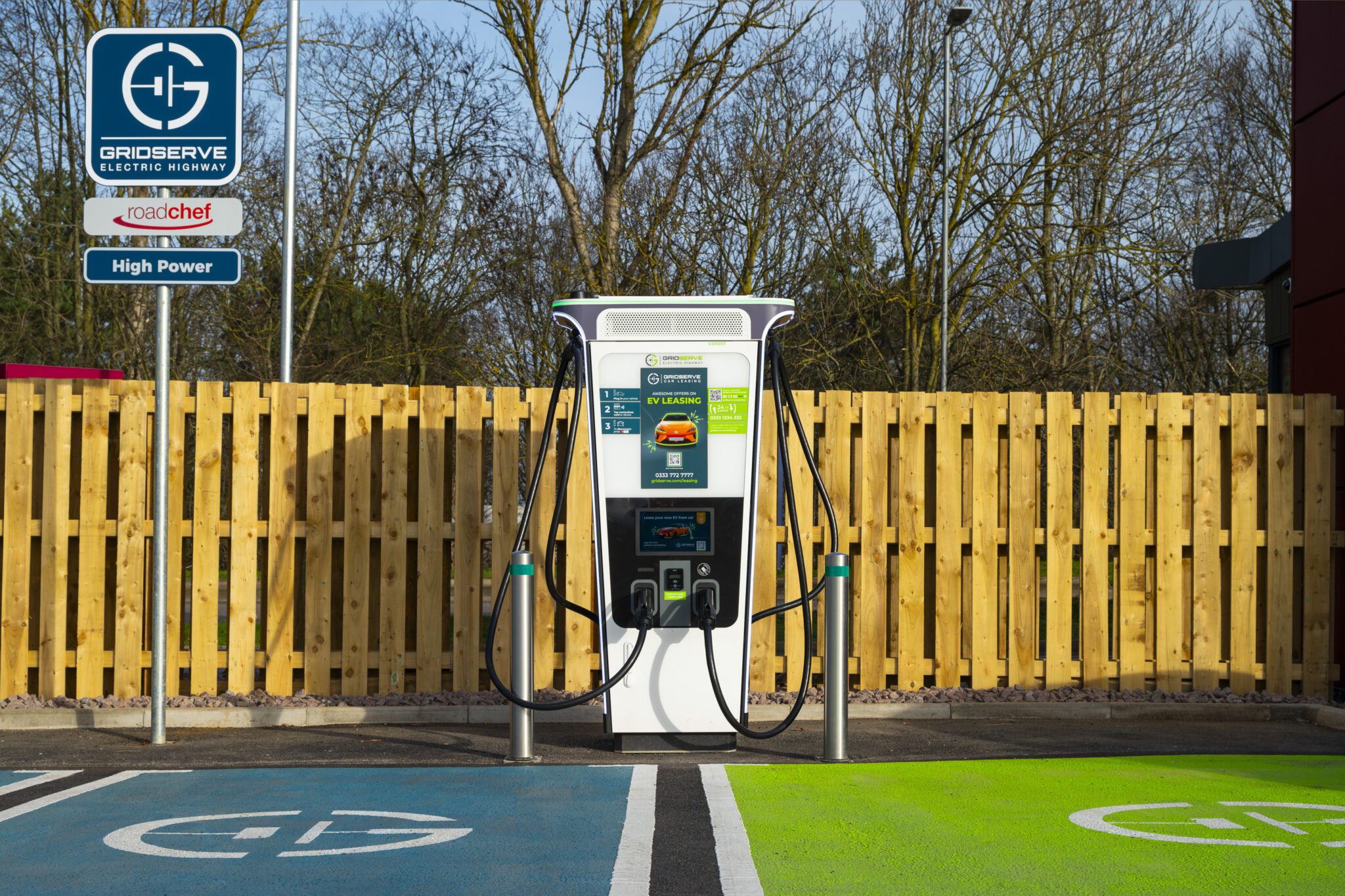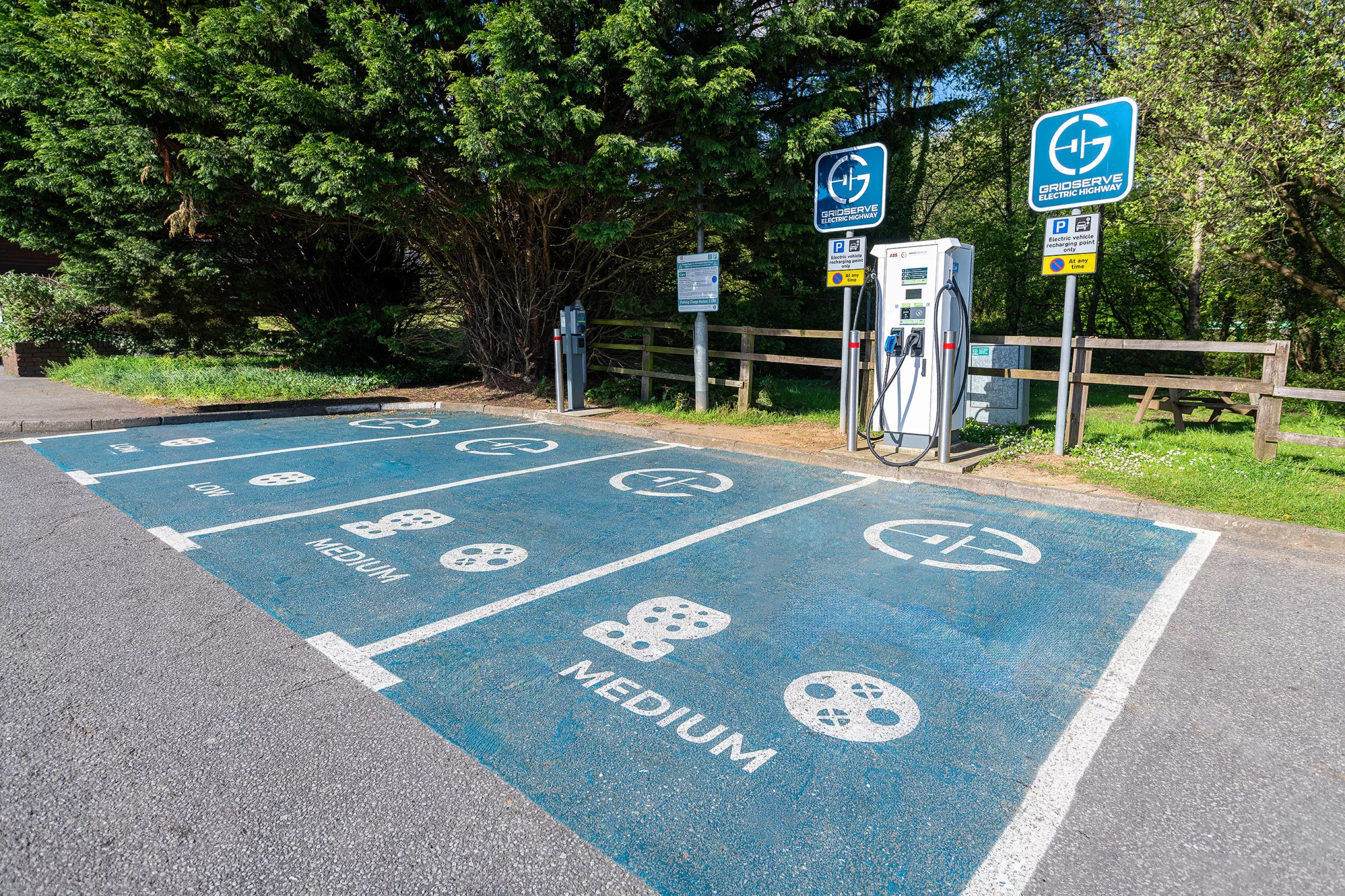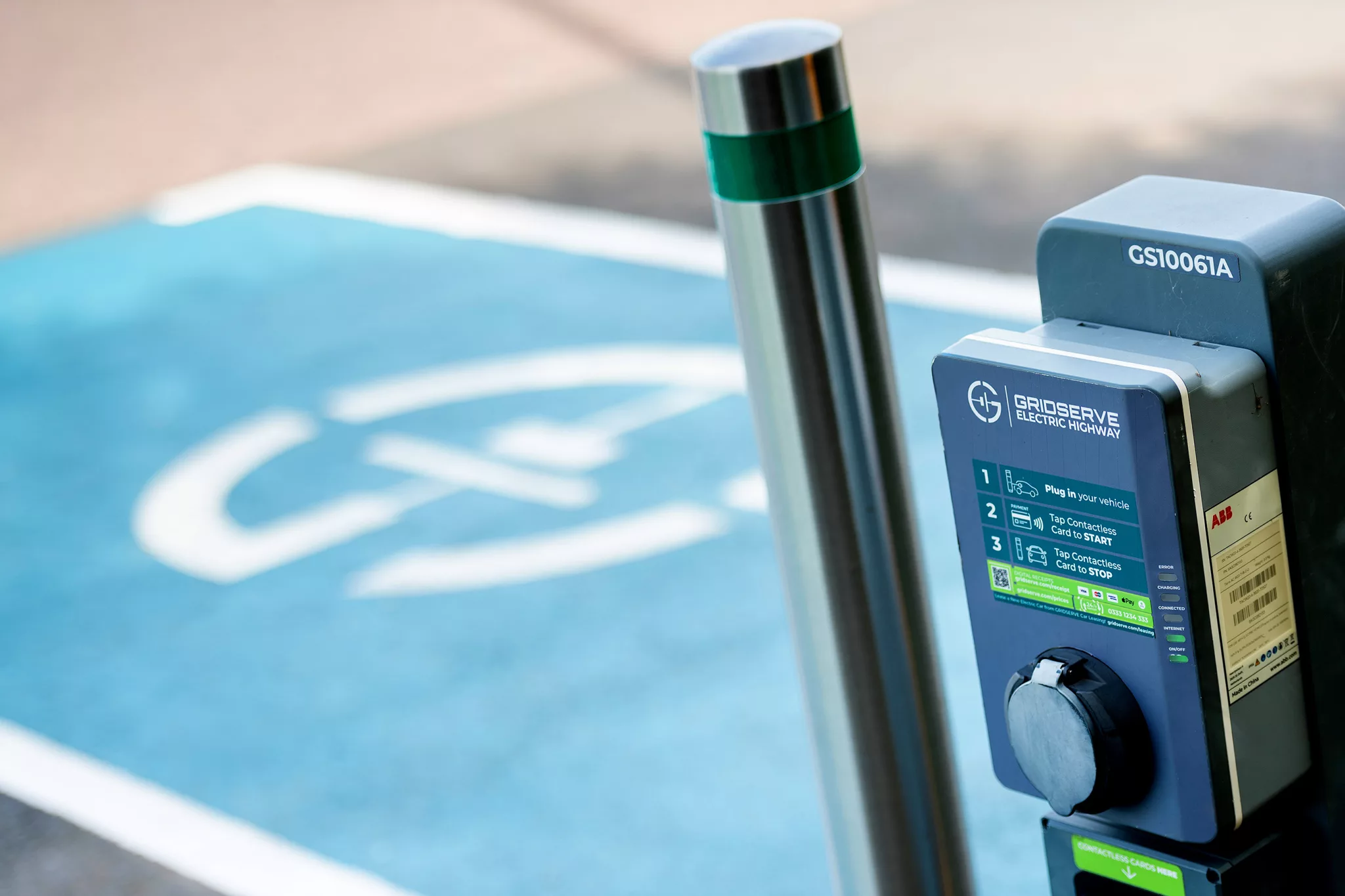The charger you’re plugged into and the model of your electric car will determine how fast you can top up your battery.
Across the GRIDSERVE Electric Highway, we offer a range of EV chargers with different power outputs. We have split them into three categories:
Our High Power chargers are located at our Electric Super Hubs, Electric Retail Hubs and Electric Forecourts®, delivering up to 360kW.
Some of these units cater for both CCS and CHAdeMO connectors, with CHAdeMO output limited to 100kW.
We currently have two types of High Power chargers on the network. Some have two connectors but are not able to charge two cars simultaneously. These will have one charging bay per unit.
Some of our High Power chargers can charge two cars at once and will be situated in the middle of two charging bays, indicating that two vehicles can park and plug in at the same time, as the examples below show.
Single bay High Power charger

Dual bay High Power charger

Our Medium Power chargers can supply up to 90kW and can be found at our Electric Hubs, Braintree Electric Forecourt® and Electric Retail Hubs across the network, catering to both CCS and CHAdeMO users.
Most units are also able to support dual charging, which allows two vehicles to plug in and charge at the same time. However, dual charging does split the charger’s power in half between both connectors.

What we refer to as our standalone Low Power AC chargers can be found across the GRIDSERVE Electric Highway, including some provision at our Electric Forecourts®. These are untethered so remember to bring your own cable.

Top tip: Charging curve explained
Charging an electric car is not like flicking on a light switch. That’s to say, you don’t plug in and immediately get a static amount of power flowing into your car’s battery.
Instead, because of complex battery chemistry, there’s something known as a charging curve. It means when you first plug in, the battery will initially pull charge at a slower rate before increasing to hit its maximum charging power. It’ll then stay close to this for most of the charge, but as you approach completion (normally above 80%), the power will taper off to protect the battery from over-filling.
The maximum charging speed you’ll achieve during the peak phase will also depend on a number of factors, including the charger you’re using, the vehicle specification, state of charge, grid connection, weather conditions and battery temperature.
Good to know: Finding our chargers
Our GRIDSERVE Electric Highway map helps you identify the EV charging station, the types of charger and connectors available at each of our locations. You can also search via the app for the latest information about our network.
How to improve your charging speed
Pre-conditioning your electric vehicle’s battery can improve both charging speed and overall vehicle performance. Essentially this means warming up your battery before charging so it’s ready to accept higher power. You’ll find many vehicles have a scheduling option on their app so you can schedule preconditioning before you set off.
Get in touch with GRIDSERVE

Tell us what you think
Help us deliver the best charging experience by joining our EV community.

Our 24/7 helpline:
Call us on 0800 240 4242 for real-time help at one of our charging locations.

Follow us on Twitter
Get the latest news and updates on the GRIDSERVE Electric Highway.
Real-time troubleshooting
Call our expert team for 24-hour support at a charging location across the GRIDSERVE Electric Highway.
Contact us
Do you still have questions?
Send a message to our customer support team and we’ll get back to you as soon as possible.
Contact us